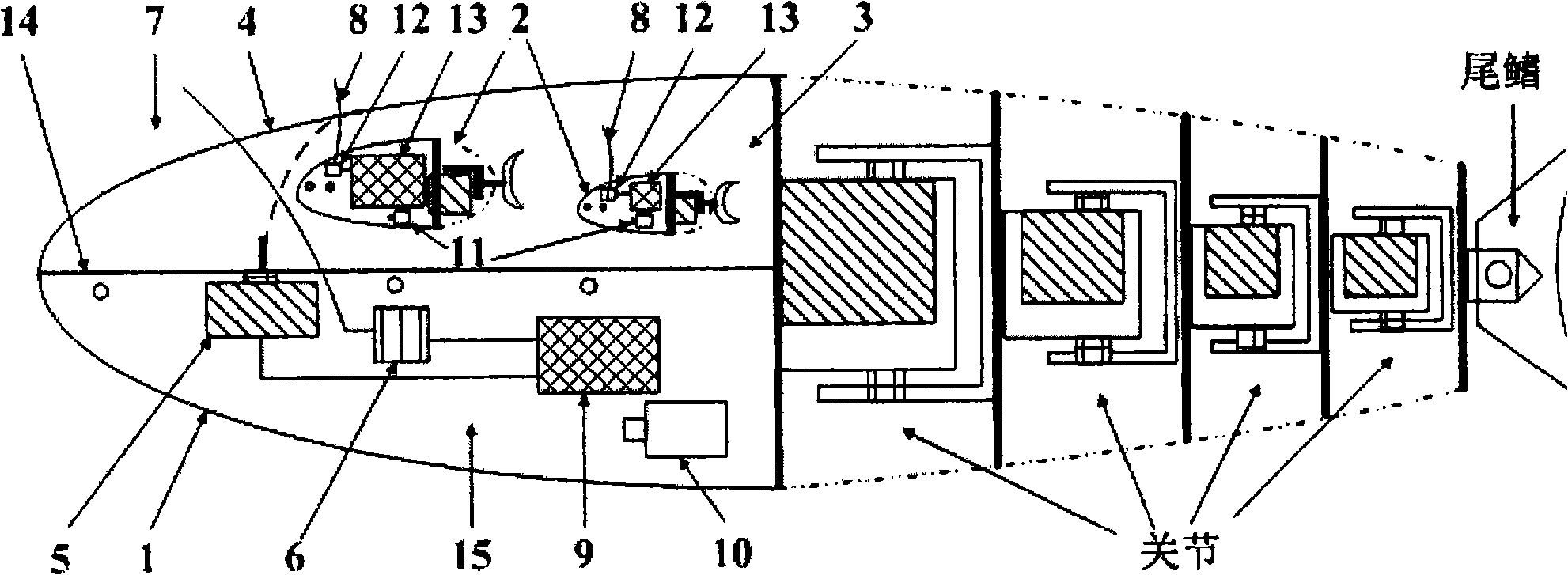Parent-subsidiary bionic machinery fish system
A robotic fish and parent-child technology, applied in the field of bionic robots, can solve problems such as the inability of bionic robotic fish to meet task requirements, and achieve the effect of improving efficiency and broadening the scope of application
- Summary
- Abstract
- Description
- Claims
- Application Information
AI Technical Summary
Problems solved by technology
Method used
Image
Examples
Embodiment
[0028] The child-mother-type bionic robotic fish system is designed using the method provided by the invention. Carrying cabin 3 is made of glass fiber reinforced plastics. The female robotic fish 1 and the sub robotic fish 2 are modified based on the multi-joint bionic robotic fish developed by the Institute of Automation of the Chinese Academy of Sciences. A carrier compartment 3 is added to the head of the parent machine 1, and a control steering gear 5, sub-machine 2 Reduced the number of joints in the tail. The communication modules 6 and 12 use EM100B, the rechargeable battery of the main unit 1 uses a 3000mAH lithium polymer battery, the rechargeable battery of the sub unit 2 uses a 340mAH lithium polymer battery, and the control steering gear 5 in the mechanical compartment 15 of the main unit 1 uses RX515 of SANWA. Assemble all parts of the parent machine 1 and each sub-machine 2 and seal them with rubber glue, and then put the sub-machines into the carrier compartment of...
PUM
 Login to View More
Login to View More Abstract
Description
Claims
Application Information
 Login to View More
Login to View More - R&D
- Intellectual Property
- Life Sciences
- Materials
- Tech Scout
- Unparalleled Data Quality
- Higher Quality Content
- 60% Fewer Hallucinations
Browse by: Latest US Patents, China's latest patents, Technical Efficacy Thesaurus, Application Domain, Technology Topic, Popular Technical Reports.
© 2025 PatSnap. All rights reserved.Legal|Privacy policy|Modern Slavery Act Transparency Statement|Sitemap|About US| Contact US: help@patsnap.com

